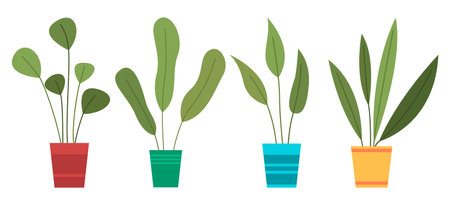Understanding UK Garden Conditions
If you’ve ever watched your garden transform with the shifting British seasons, you’ll know that no two months are quite the same. The UK’s unique climate—characterised by mild winters, cool summers, and plenty of rainfall—creates both opportunities and challenges when it comes to planning your garden lighting. From the gentle drizzle of spring to the long twilight hours of summer and the crisp, early evenings in autumn, each season brings its own mood and requirements for illumination. The frequent cloud cover can mean less natural light, making strategic lighting essential for both safety and ambiance after dusk. Moreover, the damp environment means that garden lights must be chosen with durability in mind, favouring weatherproof fittings designed to withstand rain, wind, and occasional frost. When selecting garden lighting solutions, it’s important to consider how the interplay of sunlight and shadow changes throughout the year. Thoughtful placement of lights not only highlights seasonal blooms but also ensures paths remain visible and inviting during those darker winter afternoons. By understanding these uniquely British conditions, you can create a welcoming outdoor space all year round—one that adapts gracefully as your garden grows and evolves through every season.
2. Types of Garden Lighting
Choosing the right type of garden lighting is essential for creating a warm, inviting outdoor space that stands up to the unique challenges of the UK climate. Below, we delve into the three most popular lighting options—solar, LED, and mains-powered lights—highlighting their advantages and disadvantages with respect to British weather conditions.
Solar Garden Lights
Solar lights harness energy from the sun during daylight hours, storing it for use at night. They are an eco-friendly choice and often appeal to families looking for an easy installation without wiring.
| Pros | Cons |
|---|---|
| No need for wiring or electricity Lower running costs Environmentally friendly Safe for children and pets |
Performance can be unreliable during long, cloudy UK winters May provide dimmer light Batteries may require periodic replacement |
LED Garden Lights
LED (Light Emitting Diode) lights are known for their energy efficiency and longevity. Available as both plug-in and battery-operated units, they offer a versatile option for UK gardens.
| Pros | Cons |
|---|---|
| Highly energy efficient Long lifespan Bright and consistent illumination Tolerant of damp UK conditions if rated for outdoor use |
Slightly higher upfront cost May require professional installation if connected to mains power |
Mains-Powered Garden Lights
Mains-powered lights are connected directly to your home’s electrical system. They are ideal for larger gardens or when you need reliable, high-output lighting regardless of the season.
| Pros | Cons |
|---|---|
| Uninterrupted performance in any weather Suits extensive or feature lighting schemes No dependency on sunlight or batteries |
Installation can be complex and may require a qualified electrician Higher running costs than solar or LED options Cables need to be protected from wet soil and frost heave common in UK winters |
A Family-Friendly Approach to Choosing Lights
If you’re gardening with little ones, consider combining solar path lights with LED fairy lights in shrubs—a playful way to add sparkle while ensuring safety. Remember, each garden is as unique as every child’s imagination; think about your family’s habits and how your chosen lights will enhance those magical outdoor moments, even during drizzly British evenings.

3. Designing with British Gardens in Mind
When it comes to garden lighting in the UK, designing with traditional British gardens at heart can transform your outdoor space into a charming, inviting haven. Picture winding paths lined with fragrant lavender or foxgloves, lush borders teeming with perennials, and classic stone patios perfect for an evening cuppa. Here’s how you can arrange lights to accentuate these quintessentially British features and create a magical atmosphere even after dusk.
Highlighting Meandering Pathways
Winding pathways are a signature of British gardens, often leading visitors on a gentle journey through different planting areas. Use low-level stake or bollard lights along the edges of your paths to guide footsteps safely while casting a soft glow that won’t overpower the natural beauty. For a subtler touch, consider recessed ground lights or lantern-style fittings that echo the timeless charm of cottage gardens.
Enhancing Lush Borders and Flowerbeds
Lush borders filled with herbaceous perennials deserve to be admired day and night. Position spike spotlights discreetly among your planting to gently illuminate tall delphiniums, roses, or hydrangeas from below, creating depth and drama. Avoid harsh white light—opt instead for warm LEDs that mimic the golden hue of sunset, which flatters foliage and petals alike without disturbing local wildlife.
Creating Cosy Patio Retreats
The classic patio is where many families gather for summer barbecues or evening relaxation. String festoon lights overhead for a playful yet sophisticated look reminiscent of British village fêtes. Wall-mounted lanterns in traditional finishes such as aged bronze or black iron add character and blend seamlessly with period architecture. To evoke a sense of intimacy, cluster solar-powered candles or LED tea lights on tables and steps.
Blending Practicality with British Style
Remember, the unpredictable UK climate means moisture-resistant and durable fittings are essential. Choose fixtures rated for outdoor use to withstand drizzle, frost, and the occasional downpour. By thoughtfully arranging your lighting scheme around the unique contours and classic features of your garden, you’ll not only enhance safety but also celebrate the storybook charm of British outdoor living—making every evening feel special, no matter the weather.
4. Energy-Efficient Solutions
When it comes to garden lighting in the UK, energy efficiency isn’t just a buzzword—it’s a practical necessity. With our ever-changing weather and a growing focus on sustainability, choosing eco-friendly and cost-effective lighting options can brighten your garden while caring for the planet and your wallet. Let’s explore some energy-efficient solutions perfect for British gardens.
Eco-Friendly Lighting Technologies
Embracing new lighting technologies is a wonderful way to reduce your carbon footprint. Here are some popular options:
| Lighting Type | Energy Efficiency | Best Use in UK Gardens |
|---|---|---|
| LED Lights | Use up to 85% less energy than traditional bulbs | Pathways, flower beds, accent lighting |
| Solar-Powered Lights | No electricity required; powered by sunlight even on cloudy days | Driveways, borders, patios |
| Low-Voltage Lighting | Uses less power, safer for family gardens | Pergolas, decking, water features |
Sustainable Practices for Garden Lighting
Being mindful of how you use lighting can further enhance sustainability. Here are some plant-inspired tips:
- Tune into Nature’s Rhythm: Use timers or smart sensors so lights only come on when needed—just like sunflowers turning towards the sun.
- Layer Your Lighting: Combine different types of lights to create depth and highlight features without over-illuminating (think of how plants grow at different heights for maximum sunlight).
- Choose Durable Fixtures: Opt for weatherproof and long-lasting materials suited to the UK’s wet conditions, ensuring your investment grows with your family garden.
- Recycle and Reuse: Where possible, select fittings made from recycled materials and responsibly dispose of old bulbs.
The Cost-Saving Benefits for UK Homeowners
Switching to efficient solutions doesn’t just support the environment—it also saves money in the long run. Lower running costs, fewer replacements, and reduced maintenance mean more resources for other gardening adventures with your loved ones. By investing thoughtfully in your outdoor lighting, you nurture both your home’s beauty and the world around you.
5. Installation Tips and Best Practices
Transforming your garden into a luminous sanctuary is as much about clever installation as it is about choosing the right lights. The UK’s unpredictable weather and often damp conditions mean you’ll want to take extra care to ensure safety and longevity for your garden lighting. Here are some essential tips, inspired by both practical experience and nature’s knack for resilience, to help you install your garden lights effectively.
Plan with Purpose
Before you begin, map out where you’d like each light to go. Like planting seeds in just the right spot, consider the needs of each area: highlight winding pathways, showcase treasured plants, and create cosy corners for evening relaxation. Sketch a simple layout, ensuring all lights will have access to power sources without trailing cables across walkways.
Weatherproof Your Choices
In the UK, moisture is an ever-present companion. Choose outdoor-rated fixtures and bulbs with appropriate IP (Ingress Protection) ratings—look for IP65 or higher to withstand rain and splashes. Double-check that all junction boxes and connections are waterproofed using weatherproof gel or outdoor-specific connectors. It’s a bit like tucking your plants in before a frost—protecting them ensures they thrive.
Cable Safety Matters
Cables should always be buried at least 30cm underground or run through protective conduit if surface mounting is unavoidable. This not only keeps your garden tidy but also shields wires from accidental damage by enthusiastic gardeners or curious wildlife. If you’re running cables under lawns or borders, use marker tape above the cable trench so future digging won’t end in surprises.
Install with Care
Use RCD (Residual Current Device) protection on all outdoor circuits to guard against electric shock—a non-negotiable safety measure in British gardens. If in doubt, consult a qualified electrician. Remember: water and electricity don’t mix well, so never attempt installations during wet weather, and always switch off mains power before handling any wiring.
Test Before You Finish
Once everything is connected, test each light at dusk before filling in trenches or securing fittings permanently. This way, you can make adjustments easily—much like stepping back to admire new plantings before settling them in for good.
A Final Thought
Installing garden lighting can be a rewarding family project—invite children to help plan placements or bury cables (with supervision), turning it into a learning moment about safety and caring for living spaces. With careful installation, your garden will glow safely through every season, come drizzle or shine.
6. Maintenance and Seasonal Care
When it comes to garden lighting in the UK, a little care goes a long way—much like tending to your favourite plants with your children. Keeping your outdoor lights shining bright throughout the changing British seasons requires both regular attention and some thoughtful preparation.
Weatherproofing for the British Climate
The UK’s famously unpredictable weather—from autumn mists to winter frosts and summer showers—can take its toll on garden lighting. Choose fixtures that are rated IP65 or above to ensure they’re well protected against rain and damp. It’s wise to check seals and gaskets every few months; if you notice any cracks or wear, replace them promptly to prevent water ingress.
Routine Cleaning: A Family-Friendly Task
Just as you’d dust leaves with your little ones, make cleaning garden lights a regular part of your household chores. Use a soft cloth with mild soapy water to gently wipe down fixtures, removing cobwebs, moss, or bird droppings that might block the light. Avoid harsh chemicals, as these can damage finishes and harm nearby plants.
Seasonal Checks and Bulb Replacement
Each season brings its own set of challenges. In spring and autumn, check for debris buildup around fittings—fallen leaves can cause moisture to linger. During winter, clear snow or ice carefully without scratching the lenses. For LED bulbs, inspect for signs of dimming and replace promptly for consistent illumination, especially along paths where safety is paramount.
Caring for Solar-Powered Lights
If you’ve opted for eco-friendly solar lights, remember they need a bit of sunshine even during cloudy British days. Occasionally wipe solar panels clean to maximise energy absorption and reposition them if surrounding plants have grown taller and are casting shade.
A Lasting Glow for Every Season
By weaving routine maintenance into your family’s gardening rhythm—much like nurturing seedlings together—you’ll enjoy a beautifully lit garden all year round. With a bit of attention and care, your garden lighting will continue to create magical moments through every season in true British style.

